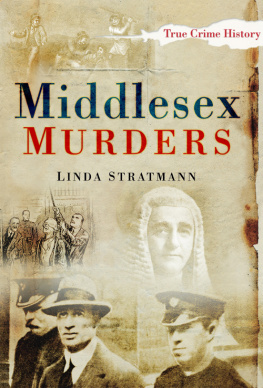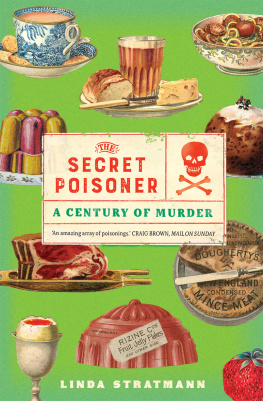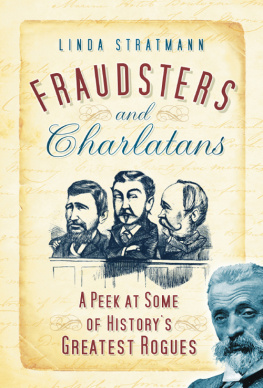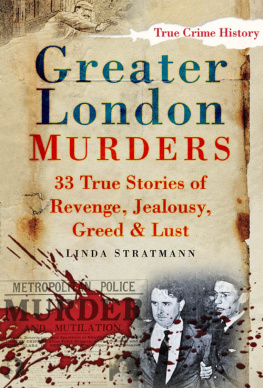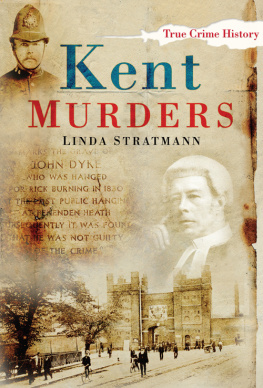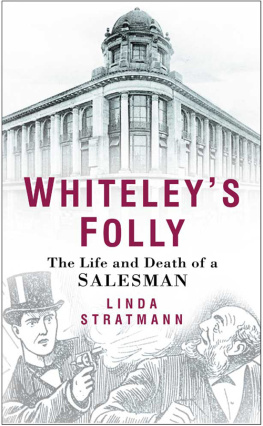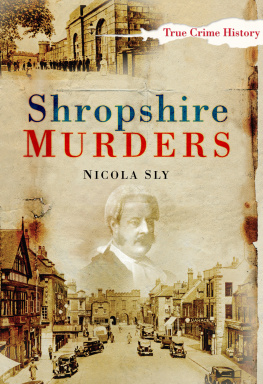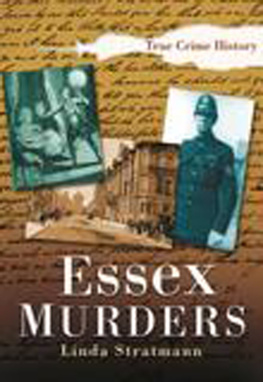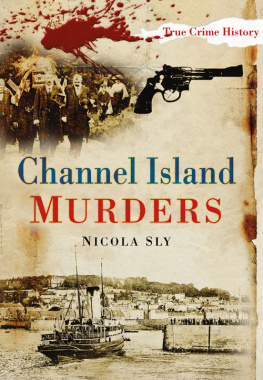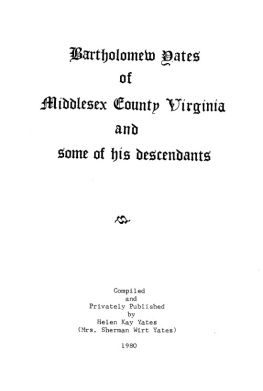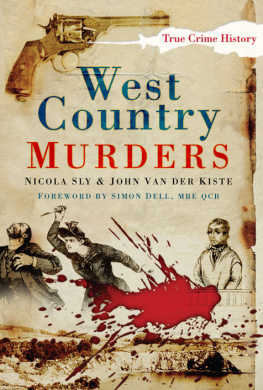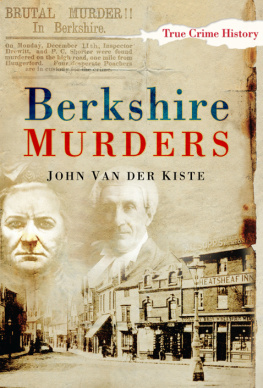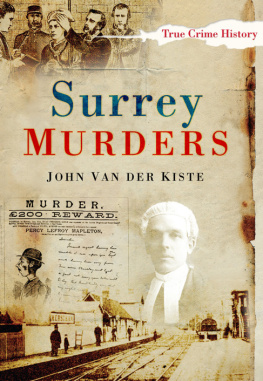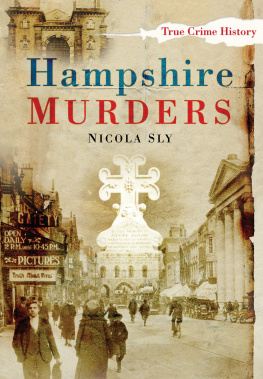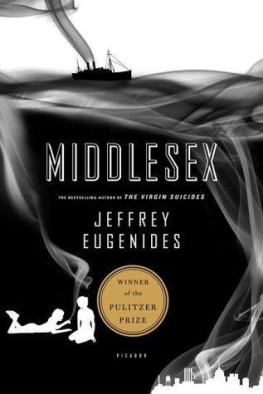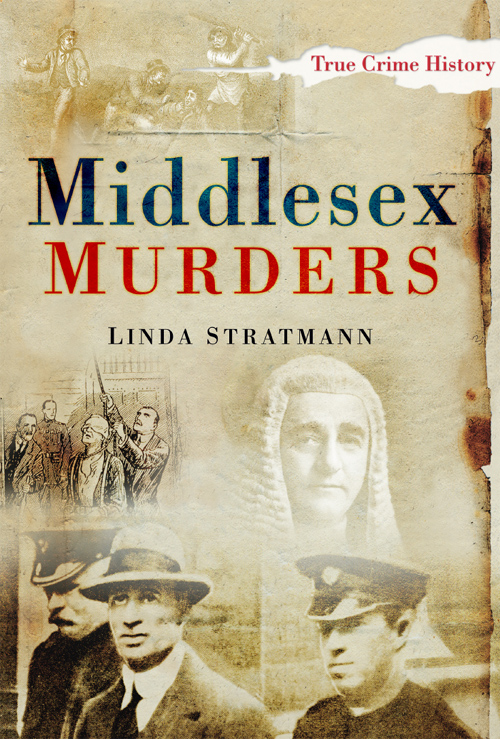Middlesex
MURDERS
LINDA STRATMANN

To John and Janice
First published in 2010
The History Press
The Mill, Brimscombe Port
Stroud, Gloucestershire, GL5 2QG
www.thehistorypress.co.uk
This ebook edition first published in 2012
All rights reserved
Linda Stratmann, 2010, 2012
The right of Linda Stratmann, to be identified as the Author of this work has been asserted in accordance with the Copyrights, Designs and Patents Act 1988.
This ebook is copyright material and must not be copied, reproduced, transferred, distributed, leased, licensed or publicly performed or used in any way except as specifically permitted in writing by the publishers, as allowed under the terms and conditions under which it was purchased or as strictly permitted by applicable copyright law. Any unauthorised distribution or use of this text may be a direct infringement of the authors and publishers rights, and those responsible may be liable in law accordingly.
EPUB ISBN 978 0 7524 8403 7
MOBI ISBN 978 0 7524 8402 0
Original typesetting by The History Press
CONTENTS
AUTHORS NOTE
I would like to extend my grateful thanks to everyone who has assisted me with the research for this book. As always, the friendly staff at the British Library, Colindale Newspaper Library and the National Archives have been invaluable, and I was especially delighted to be granted permission to view files in the National Archives which had, until November 2009, been closed. My thanks and good wishes are due to Garry Nathan and everyone at Moorcroft House for the information and a tour of a fascinating estate. I was delighted that a great-niece of Daisy Holt (chapter 6) shared some family memories with me. These personal details are what brings the past back to life and excite me more than any dry document! I would also like to thank the parish officers of St Martins Church, Ruislip, and everyone at The Stag, Enfield for their help. My husbands advice and support as well as his willingness to drive me to the scenes of old crimes and trudge through muddy woods and fields in search of the best pictures is appreciated more than I can say.
All photographs taken by the author are the copyright of Linda Stratmann.
1
MURDER ON THE HEATH

Hounslow Heath, 1802

I n 1802 Hounslow Heath was a dangerous place, long known to be the haunt of highwaymen and footpads. This remnant of the ancient forest of Middlesex covered about 25 square miles, and although it was crossed by roads, it was regarded as somewhere to be avoided, or at least passed through as quickly as possible, preferably in a well-guarded coach.
At Feltham, not far from the road which linked Staines and Hounslow, was the country home of 35-year-old John Cole Steele, described as a young man of very amiable character. The proprietor of the Lavender Water Warehouse, No. 15 Catherine Street, near the Strand, he had married Mary Ann Meyer in 1798. Steele owned a lavender plantation at Bedfont, not far from Feltham, which he visited regularly to give instructions to his manager, Henry Mandy.
On the afternoon of Friday, 5 November 1802, Steele left his London townhouse for Feltham. He was wearing a drab-coloured greatcoat, a shorter coat, breeches with stockings underneath, a striped waistcoat, half boots and a smart round hat. He did not state exactly when he would return, although there was an arrangement that he and his family would gather to celebrate his wifes birthday on Sunday. When Steele failed to return on Saturday it was assumed that he had been detained by business and was staying overnight at Feltham, and there was no immediate alarm, but when he was not back for the birthday party his family became concerned.
On the Monday morning a messenger was sent to Bedfont and returned with the worrying news that Steele had set out for home on Saturday evening, and, unable to obtain a carriage, had decided to walk across the heath. On Wednesday morning, Steeles brother-in-law, lavender-distiller Thomas Meyer, went to Feltham to make enquiries. Steele was not at his house, and Henry Mandy confirmed that his employer had left for home at about 7 p.m. on Saturday evening, since when nothing had been heard of him. Steele had not been in the habit of carrying large sums of money and Mandy said that his employer had then had about twenty-six or twenty-seven shillings on him.
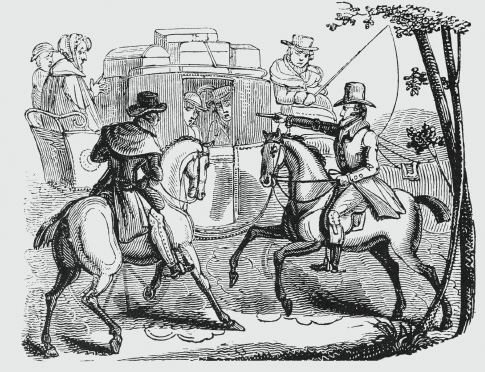
Highwaymen rob a stagecoach on Hounslow Heath, c. 1720.
Meyer asked Mandy and another gentleman called Hughes to help him search the heath, going along the Feltham to London road, Meyer and Mandy on the right and Hughes on the left. At a clump of trees near a gravel pit, on the south side of the road, Mandy picked up an old hat cut in pieces, which he handed to Meyer, but it was not the one that Steele had worn, being very much older and resembling a soldiers hat. The gravel pit was about 10 or 15 yards from the road, and as the men drew near, they saw what they thought was a piece of clothing. Pulling aside the rushes that covered most of the material, Mandy found a drab-coloured greatcoat concealed under the water and pulled it out. He recognised it as the one Steele had been wearing when he last saw him, and noticed that it had a spot of blood on the right shoulder. The three searchers consulted about what to do next and Meyer and Mandy decided to go to the nearby Hounslow cavalry barracks in Beavers Lane and obtain the help of the officers and men to search for Steele. When they returned they found that a great many more people had arrived to join in the search.
It was Hughes who found the body; about 200 yards north of the road, lying in a ditch by a clump of trees, with the turf from the bank pulled across to partly conceal it. Steele lay on his back, the flap of his coat over his face, and a strap around his neck. He was not wearing his hat, stockings or boots. When the body was lifted out Hughes saw that the face was covered in blood and dirt, and there had been a violent blow on the back of the head. The strap had once had a buckle which was broken off, and one end had a knife run through it, and the other end drawn through so it was very tight. About 50 yards away Hughes found a pair of shoes. A large stick was also found. The hat, stick and shoes were handed to Isaac Clayton, the beadle of Hounslow, and they were eventually placed before police magistrate Sir Richard Ford at Bow Street.
The body was conveyed to The Ship public house at Hounslow and a surgeon, Mr Henry Frogley, was called. He found an extensive fracture on the front of the head with lacerations of the skin, and another lacerated injury on the back of the head, both of which he thought had been inflicted with a blunt instrument such as a stick. There had also been a heavy blow on the right arm. The strap was tight enough to cause suffocation, but it was his opinion that the head wounds were the immediate cause of death. The difficult task of telling Mrs Steele of her husbands death fell to her mother, but initially she was spared the worst details, being told that he had died of a fit. The inquest was held at The Ship and returned a verdict of wilful murder against some person or persons unknown.

